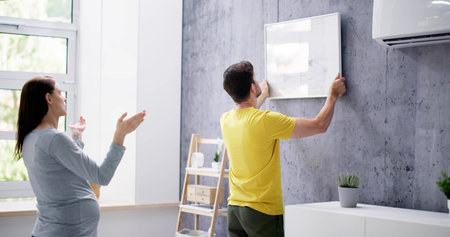Overview: What Makes a Home Smart or Dumb?
If you’ve ever wondered what separates a traditional “dumb” home from a modern smart home, you’re not alone. Most American homes were built long before smart tech became mainstream, so the idea of upgrading can seem both exciting and overwhelming. Let’s break it down in plain English: a “dumb” home is basically your standard house—think manual light switches, old-school thermostats, and appliances that don’t talk to each other. You have to physically be there to control most things, whether it’s turning off lights or cranking up the AC.
On the flip side, a smart home uses connected devices—like smart thermostats, security cameras, and voice assistants—to automate and remotely manage daily functions. The real magic is in the integration: systems communicate with each other, learn your habits, and adapt to save energy or boost convenience. In an American context, this means you can unlock your front door for a guest from your phone while you’re stuck in traffic, or tell Alexa to start the coffee maker before you even get out of bed.
The core principle behind smart technology is simple: making life easier and more efficient. It’s about saving time, cutting utility costs, and adding an extra layer of security—all while staying hands-off. As more US families juggle busy schedules and look for ways to streamline routines, retrofitting traditional homes with smart tech isn’t just trendy—it’s practical and increasingly essential for a modern lifestyle.
Assessing Your Homes Retrofit Potential
Before you drop cash on the latest smart home gadgets, take a hard look at your house’s bones. Not every American home is ready for a seamless tech upgrade. Age, wiring, and layout will either make or break your smart retrofit ROI. Here’s your guide to evaluating whether your place is “smart-ready” or stuck in the dumb home era.
Step 1: Age of Your Home
Older homes—think pre-1980s—often lack modern wiring and space for new tech infrastructure. Newer builds usually have more outlets, updated circuit breakers, and sometimes even basic smart wiring. Use this table to get a quick idea:
| Home Age | Common Issues | Retrofit Difficulty |
|---|---|---|
| Pre-1950s | Knob-and-tube wiring, limited outlets | High |
| 1950s-1979 | Old breaker panels, mixed wiring standards | Medium-High |
| 1980s-2000s | More outlets, but may lack Cat5/6 cabling | Medium |
| 2010-Present | Modern wiring, some smart features pre-installed | Low |
Step 2: Wiring Check-Up
You can’t plug in a $300 smart thermostat if your HVAC has two ancient wires coming out of the wall. Grab a voltage tester and check your major systems (lighting, HVAC, security). If you’re not sure what you’re looking at, bring in an electrician for a quick audit—it’s money well spent if it saves you thousands in failed tech installs.
Pro Tip: Look for Neutral Wires
Most smart switches need a neutral wire. Pop open your switch plates and check—if you don’t see white wires bundled together in the back, factor in extra costs for rewiring.
Step 3: Layout & Wi-Fi Coverage
Your 1920s Craftsman wasn’t built with Wi-Fi signals in mind. Walk around with your phone and test signal strength—dead zones mean you’ll need mesh Wi-Fi or repeaters. Consider device placement too; thick walls or multiple floors can kill connectivity and ROI fast.
Actionable Tips to Maximize Your Investment Return:
- Tackle high-impact areas first: Start with smart thermostats or lighting where energy savings are proven.
- Avoid over-investing in homes with significant electrical issues unless you plan a full renovation.
- Add mesh routers before installing lots of smart devices—you need rock-solid coverage for everything to work smoothly.
- If resale is important, focus on upgrades that are visible and valuable to buyers (security cameras, smart locks).
- Document every upgrade for future buyers—proving your home is “smart-ready” boosts its market value.
Smart retrofitting isn’t just about having cool gadgets—it’s about making strategic upgrades that deliver real returns, both in convenience and cold hard cash when it’s time to sell.

3. Budget-Friendly Smart Upgrades that Pay Off
If you think smart home tech is only for new builds or big spenders, think again. Retrofitting traditional American homes with affordable smart upgrades isn’t just possible—it’s a move that can deliver real financial returns and lifestyle improvements. Let’s break down the most practical, wallet-friendly options, and see how they stack up in terms of both immediate savings and long-term value.
Smart Thermostats: The ROI Leader
Swapping out your old thermostat for a smart one like the Nest or ecobee is a classic upgrade with serious payback. These devices learn your habits, adjust heating and cooling on the fly, and can be controlled remotely from your phone. According to the EPA, a smart thermostat can save the average U.S. household about 10-12% on heating and 15% on cooling bills annually. With an upfront cost under $200 and potential rebates from local utilities, most homeowners see payback in less than two years—a no-brainer investment.
LED Smart Lighting: Small Change, Big Impact
Switching to LED smart bulbs throughout your home costs little but delivers ongoing savings. These bulbs use up to 75% less energy than incandescents and last much longer. Add in app or voice control (think Alexa or Google Home), automated schedules, and motion sensors, and you’re not only saving money—you’re boosting convenience and security. For renters or those not ready for major renovations, this is one of the easiest entry points into smart tech with quick, tangible benefits.
Smart Security: Peace of Mind, Higher Value
A basic smart security setup—think video doorbells (like Ring), wireless cameras, and smart locks—can be installed without rewiring or drilling holes everywhere. Not only do these upgrades deter crime (a proven selling point in many U.S. neighborhoods), but they also lower homeowner’s insurance premiums with many providers. Plus, when it comes time to sell, listings with smart security features often stand out in a crowded market.
Bonus: Smart Plugs & Sensors
Smart plugs and environmental sensors are inexpensive yet powerful tools for retrofitting older homes. Plug any lamp or appliance into a Wi-Fi-enabled outlet for instant automation or energy monitoring—no electrician needed. Water leak detectors and air quality monitors help prevent costly disasters and keep your family safer, further enhancing your home’s appeal and value.
The Bottom Line
You don’t need to gut your house or break the bank to go “smart.” Focus on high-impact, budget-friendly upgrades that provide measurable returns—lower utility bills, better insurance rates, increased property value, and greater day-to-day convenience. In today’s American market, smart means savvy—and retrofitting your traditional home is one investment that pays off from day one.
4. DIY vs Hiring the Pros: What’s Worth Your Time?
When it comes to retrofitting your traditional home with the latest smart tech, you have two main options: rolling up your sleeves for a do-it-yourself (DIY) project or bringing in the pros. Each approach has its own set of trade-offs, especially in the US market where costs and skillsets vary widely. Let’s break down the risks, effort, and investment returns associated with each route—and help you decide when it pays to go hands-on or call in the experts.
The DIY Route: For the Hands-On Homeowner
DIY is appealing for those who love control and saving money upfront. Many smart home devices—like thermostats, video doorbells, and smart plugs—are marketed as “plug-and-play.” Big-box retailers like Home Depot and Lowe’s cater to this trend, offering kits that make installation accessible even for tech novices. However, DIY isn’t always as easy as YouTube makes it look. You risk voiding warranties, damaging existing wiring, or running afoul of local building codes.
Pros and Cons of DIY Installation
| Aspect | DIY | Professional Installation |
|---|---|---|
| Cost | Lower upfront cost | Higher upfront cost |
| Time Investment | Potentially high (learning curve) | Minimal (handled by pros) |
| Skill Required | Basic to intermediate technical skills | No skills required from homeowner |
| Risk Level | Possible mistakes; warranty issues | Low risk; covered by service guarantee |
| Customization | Total control over setup | Limited by installer’s expertise |
When to Hire the Pros: Value Beyond Convenience
If your retrofit involves complex systems—like whole-home automation, integrated security setups, or anything requiring electrical rewiring—it’s time to call a licensed professional. In the US, many states require certified electricians or low-voltage contractors for certain installations. Yes, you’ll pay more upfront (think $500–$3,000 depending on project scope), but you gain peace of mind: warranties remain intact, work meets code, and any headaches become someone else’s problem.
The Smart Money Move: Know When to Outsource
If your goal is maximizing return on investment (ROI), consider this rule of thumb: DIY is best for small-scale upgrades that don’t impact your home’s infrastructure (think smart locks or bulbs). For anything that could affect resale value—or if you plan to list your home in a competitive US market—professional installation often delivers a better payoff through higher buyer confidence and fewer inspection issues down the line.
5. Tech Pitfalls: Common Mistakes & How to Avoid Them
Upgrading a classic American home with smart technology can feel like a brilliant move—until you hit those all-too-common snags that drain your wallet and patience. Here’s a hard-nosed look at frequent retrofitting errors and how savvy homeowners sidestep them for maximum return on investment.
Compatibility Confusion
Many jump straight into buying the latest gadgets, only to find out they don’t play nice with their existing wiring or HVAC systems.
How to Avoid:
- Always check if new devices are compatible with your home’s current infrastructure.
- Consult product support forums or hire a certified installer before purchase.
Privacy Pitfalls
Smart tech often comes with microphones and cameras, raising real concerns about data security. Some homeowners skip reading privacy policies or fail to change default passwords—leaving doors open for hackers.
How to Avoid:
- Change default logins immediately after installation.
- Choose products with end-to-end encryption and transparent privacy practices.
Over-Automation Overload
Bigger isn’t always better. Cramming too many smart features into an older home can lead to network slowdowns, device failures, and a confusing user experience.
How to Avoid:
- Prioritize upgrades based on your actual needs and lifestyle.
- Start with a reliable Wi-Fi mesh system before adding multiple devices.
Poor Power Planning
Retrofitting often overlooks the increased demand on electrical circuits, risking overloads and costly repairs.
How to Avoid:
- Have an electrician assess your panel’s capacity before adding power-hungry devices.
- Consider low-voltage options where possible for lower operating costs.
Lack of Future-Proofing
Tying your entire setup to one ecosystem (like Alexa or Google Home) may lock you out of newer innovations down the road.
How to Avoid:
- Select open-platform or interoperable devices that support multiple standards (Matter is a good bet).
The Bottom Line
A strategic approach—checking compatibility, securing your network, planning power needs, and thinking ahead—can keep your smart home upgrade from turning into a dumb mistake. Smart investing isn’t just about gadgets; it’s about protecting your time, money, and peace of mind.
6. Resale Value: Does Smart Tech Really Boost Your Home’s Worth?
When it comes to retrofitting traditional homes with smart technology, one of the hottest questions on every homeowner’s mind is: Will these upgrades actually pay off when it’s time to sell? Let’s break down what the numbers and trends in the US real estate market say about smart tech’s impact on home value, buyer appeal, and marketability.
Analyzing the Data: The Smart Home Premium
According to recent studies by the National Association of Realtors (NAR) and Zillow, homes equipped with smart features—like thermostats, security cameras, lighting systems, and voice-activated assistants—tend to command higher prices compared to their “dumb” counterparts. On average, listings that highlight smart home upgrades sell for 3-5% more than similar homes without these features. While this premium isn’t guaranteed for every single device you install, buyers are showing a clear preference for move-in-ready tech solutions.
Buyer Appeal: What Today’s House-Hunters Want
US buyers, especially Millennials and Gen Z, expect connectivity and convenience. Smart locks, video doorbells, integrated security systems, and energy-saving thermostats top their wish lists. In competitive markets like Austin, Seattle, or Silicon Valley, homes featuring these upgrades often generate more showings and sell faster—sometimes in days rather than weeks. Even in slower markets, smart features can help your listing stand out from the competition and attract tech-savvy buyers willing to pay a little extra for modern comforts.
Marketability: The Edge You Need
The reality is that as smart tech becomes mainstream, “dumb” homes are starting to look outdated. Real estate agents report that mentioning smart features in listings increases click-through rates online and gets more potential buyers through the door. While not all tech investments provide a dollar-for-dollar return (think of ultra-high-end automation), affordable upgrades like smart thermostats or security systems tend to offer the best bang for your buck when it comes time to resell.
If you’re considering retrofitting your traditional home with the latest smart tech, think strategically about which upgrades add everyday value—both for you now and for future buyers down the road. In today’s market, investing in practical smart features isn’t just about comfort or cool factor; it’s a proven way to boost resale value and make your home irresistible when you’re ready to cash out.


